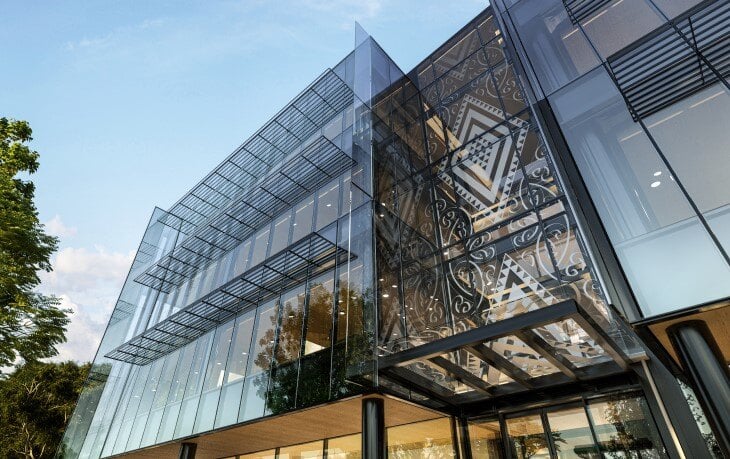In the building sector we often speak about good design, cost, and affordability. More recently the conversation has also turned to environmental responsibility, and the fact that 50% of New Zealand’s waste to landfill comes from construction. However, we're frequently failing to speak to how these are all interlinked.
We've seen a massive growth in the use of Homestar across the industry, from private market housing to retirement villages and Kāinga Ora’s social housing programme. It has also been great to see the number of Homestar rated homes growing outside the main centres. However, as we've experienced this increase in ratings, the challenges that may have once been on the periphery have become more visible.
The challenge of construction waste
For construction waste, one of the biggest challenges is how to deal with it in the regions. In Aotearoa's main centres we're seeing more and more providers with the experience, capital and the economies of scale to provide state of the art waste sorting facilities and processes to divert a significant chunk of construction waste from landfill. Projects in Auckland are regularly able to divert upwards of 70%. This is fantastic, but also highlights just how wasteful we as an industry have been for decades.
As Homestar continues to see massive growth, we're seeing more buildings popping up in the regions. These projects have highlighted just how difficult it can be to achieve waste diversion and reduction targets without access to local infrastructure. Outside the main centres we regularly see projects struggling to divert waste to extents many Auckland projects would consider business as usual despite the best efforts of builders and waste contractors.
Consider a residential project. Two of the biggest waste streams are likely to be plasterboard and treated timber offcuts. Golden Bay Cement (located near Whangarei) helps responsibly divert treated timber from landfill by using waste timber as a substitute for about 30% of the coal it would otherwise need to burn. Plasterboard is recycled at several locations around the country where it is used to produce fertiliser and other reusable resources. However, if you’re out in the regions far from these sites and serving a small local market, transport and disposal of waste may often make this option too expensive.
Local facilities equipped to sort, process and deal with the waste are often non-existent. Provision of waste diversion infrastructure is something both central and local authorities must tackle in the long term.
Fortunately, the solution for construction waste does not start at the building site.
Designing out waste
While putting the onus on builders and waste contractors to reduce waste may have worked to some extent for those with access to recycling facilities, we need to do better if we're to seriously address the issue at a national level.
That means looking at where waste is created in the first place.
The waste streams often most challenging to deal with are created not onsite, but on ArchiCAD or Revit (or an old school drafting table if you want to be extra cool). It is created during the design phase. All packaging, treated timber, and plasterboard that ends up in a skip goes through several stages of value creation representing the best efforts of hundreds of workers, some nerve wrecking business deals, a lot of transport, and probably a lot of thought around standard sizing before they arrive at a supplier.
It is then paid for by part of a home loan that will take half your career to pay off (you’ve already spent the other half saving the deposit). Even with the most careful handling onsite, some of it is destined to go on the skip because of design decisions.
Hence, the best opportunity we have to minimise construction waste is through deliberate consideration during design. It is about embedding low waste into the definition of good design.
This could be by
-
designing to standard retail product sizes when considering the form of a project.
-
specifying materials and products that can be reused or recycled locally if there's excess.
-
specifying products and materials with reduced or no packaging, or with packaging take-back schemes.
-
specifying paints with take-back schemes (major paint brands have take-back schemes that accept other brands as well).
-
Integrating in the design as much of what is already there as possible, whether it is a façade of an old building, topography of the land or materials salvaged from demolition.
-
design for deconstruction, allowing future projects that will eventually replace your creation to minimise their own demolition waste and reuse or up-cycle as much material as possible.
Recognising design in Homestar and Green Star
Reducing waste is easier said than done, but with the potential to improve on the sustainability and cost of projects, we think it is worth it. This is why in Homestar v5 we have pivoted the EN4 Construction Waste credit to reward projects that take serious steps to minimise waste being generated in the first place.
At the design stage the focus of the EN4 credit is on designing waste out, and projects must outline their waste elimination strategy at least dealing with plasterboard and other linings, treated timber and packaging. At the built rating stage, projects are required to show that waste elimination targets have been met.
Onsite sorting of waste that cannot be avoided is recognised as it builds onsite awareness around good waste practice and increases the potential of reuse. Finally, diversion of remaining waste is recognised as per previous versions of Homestar.
This brings our new construction waste credit better in line with the adage: reduce, reuse, recycle.
Within Green Star, incorporating construction waste, and deconstruction and reuse of building components into design thinking is driven through Credit 19 ‘Life Cycle Impacts’ (both life cycle assessment and life cycle impacts pathways) and credit 22 ‘Construction and Demolition Waste’. Particularly, Credit 19B.3 rewards projects where parts of the building façade or structure are retained, thus reducing waste from both the demolition of the previous building, and construction of the new one.
We hope our tools will drive further innovation and creativity in the design space. Each of the points we’ve listed above deserve their own dedicated article, and there are plenty out there. While you’re at it, we’d always recommend that every keen designer reads up on embodied carbon and circular economy as well. Our friends at the Sustainable Business Network have a range of resources to help with the latter.
Tackling construction waste will be a game changer for our industry's carbon footprint. With the biggest building boom in half a century underway, there is no time like now to design it out.



